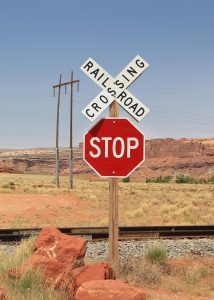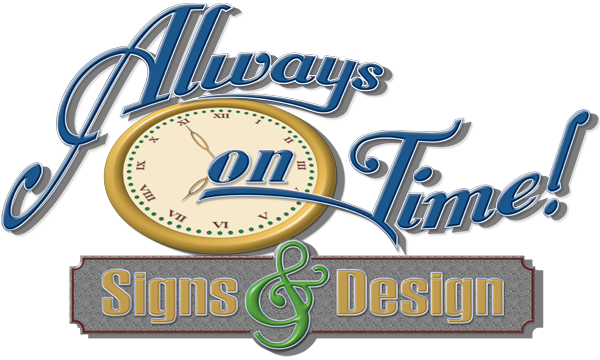Railroad Crossing Signs for Sale

Types of Railroad Crossing Signs Available
Railroad tracks are not always used for freight or passenger trains. Many cities use light rail transit to help citizens get from one point to another. So, there are quite a few unique types of railroad crossing signs you can buy. Here’s a quick overview of the options available:
- Crossbuck – According to the Manual on Uniform Traffic Control Devices (MUTCD), crossbuck signs are meant for highway-rail grade crossings. However, they can be deployed at other intersections too.
- Circular RR Crossing – This sign is circular and uses a yellow background with black lettering. Instead of saying “railroad crossing,” this sign has an X marking with an R on either side.
- Track Number – The MUTCD says that crossings with more than two tracks and no automatic gate must list the number of tracks below the railroad crossing sign.
- Stop – There are several ways to notify drivers to stop. These signs can include warnings like “stop – railroad crossing,” “do not stop on tracks,” stop here for train,” and more. These signs offer better indicators for drivers so that they can stay safe when a train is approaching.
- Cautionary Signs – In areas where an automatic gate isn’t present, you may need to warn drivers to look both ways when crossing the tracks. You can buy signs that mention this or something simpler that says “look” with an arrow in either direction (or one direction if applicable). Other examples of cautionary signs include “no train horn,” “no signal,” or “rough crossing.”
You can browse our selection of railroad crossing signs online, or you can ask our team which option is best for your situation. We’ve been making these signs for decades, so we’re well-versed in the different varieties necessary for specific locations. We also know how to stay MUTCD-compliant while following local regulations.
We also offer fluorescent signs that are highly reflective at night. This coating ensures that drivers don’t miss a potential railroad crossing, particularly if there is no automatic gate present.
Why are Railroad Crossing Signs Vital?
Although railroad collisions and deaths are not as high as other traffic incidents, they can still account for hundreds of fatalities each year. In 2020, the National Safety Council (NSC) tabulated 757 deaths, which was lower than the number in 2019. So, posting railroad crossing signs can help alleviate this problem and ensure that drivers treat trains and railroad tracks with the proper respect.
How to Identify a Railroad Crossing Sign
The purpose of a railroad crossing sign is to notify drivers that they are about to cross a railroad track. Since trains cannot stop as easily as other vehicles, it’s imperative to warn drivers so that they can pass with caution. Typically, railroad crossing signs are accompanied by other obstacles, such as an automatic barrier and warning lights.
There are several types of railroad crossing sign designs, but the original option is called the crossbuck, and it includes two rectangular signs crossed in an X formation. The rear sign says “railroad,” while the front sign says “crossing.” Although the crossbuck was created in 1910, it’s still widely used today.

The WorkSafe TCI Difference
With over 200,000 railroad crossings in the United States, it’s imperative to keep your community safe with the correct signage. At WorkSafe TCI, we work hard to ensure that our clients get the best signs that follow all state, local, and federal regulations. Here are a couple of other reasons why you should trust us for your railroad crossing needs:
- Fast Delivery – Traffic signs will wear out, and regulations can change. When you need a sign immediately, you can feel confident that we’ll fulfill your order as quickly as possible. Most of our signs are ready in seven days or less, and we can accommodate most rush orders.
- Decades of Experience – We’ve been in this industry a long time, so we know what it takes to create high-quality signage. We use the best materials and reflective coating to ensure total compliance and safety.

